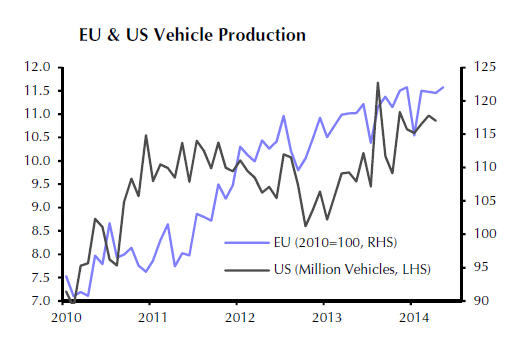
The devastating five-month strike in South Africa’s platinum industry ended last week, after a final agreement between the world’s three largest producers and the union representing about 70,000 workers.
Anglo American Platinum (or Amplats), Impala Platinum (JSE:IMP) and Lonmin (LON:LMI), estimate losses of $2.3 billion in revenue while workers forfeited nearly $1 billion in unpaid salaries. The CEO of Lonmin, the smallest of the three producers, captured the mood saying: “It’s not necessarily a time of celebration. There are no winners.”
The chief executives of the three mining firms said in a joint statement it will take time for their operations to resume full production. Lonmin said restructuring was “inevitable” to ensure it remained afloat.
Platinum futures listed on Nymex actually added 2% or $24 an ounce during the week to trade at $1481.50 an ounce on Friday. Palladium contracts did even better gaining over 3% or $32 an ounce over the course of the week from last Monday’s low of $810 an ounce.
The platinum price remains higher year to date, gaining nearly 8%, while June palladium reached levels last seen early 2011 during the strike and is up some 17% this year.
The gains come despite the fact that workers are already showing up for work and daily production of roughly 10,000 ounces of platinum and 5,000 ounces of palladium will start to find its way onto the market in coming months.
Independent research house Capital Economics says what will keep prices robust is strong demand from the auto sector (see chart) and the substantial risks to supply that still exist.
South Africa’s mines have been struggling with profitability and productivity for a while. Indeed, Anglo American had signalled its intention to sell its South African platinum mines even before the latest strike. Companies will be forced to restructure and mechanise in order to enhance competitiveness. Redundancies – and further union protests – appear inevitable.
South Africa and Russia combined account for close to 80% of global supply of palladium and 70% of platinum output which are mainly used to clean emissions in automobiles.
Capital Economics says that while fears regarding sanctions against Russia over its intervention in Ukraine have now receded “it is too soon to write off this risk” because the situation in Ukraine “has not been resolved and the outcome is still uncertain.”
Capital Economics expects palladium to finish the year at $900 per ounce compared to a Bloomberg consensus forecast of just $822 and platinum prices to reach $1,550 by end-year, up 4.7% from current levels.
If palladium futures do end around $900 it will constitute fresh territory for the metal.
Palladium futures trading on New York’s Nymex hit an all-time record price of $865 in February 2011, but the London fix for the precious metal peaked a decade earlier.
On January 26, 2001 palladium was fixed at $1,090 an ounce, but then retreated sharply to $319 by October that year.
Platinum on the other hand is nowhere near record levels, the precious metal hit $2,253 in March of 2008 and has never been above $2,000 since that year.

Source: Capital Economics
Image by Art Konovalov / Shutterstock.com